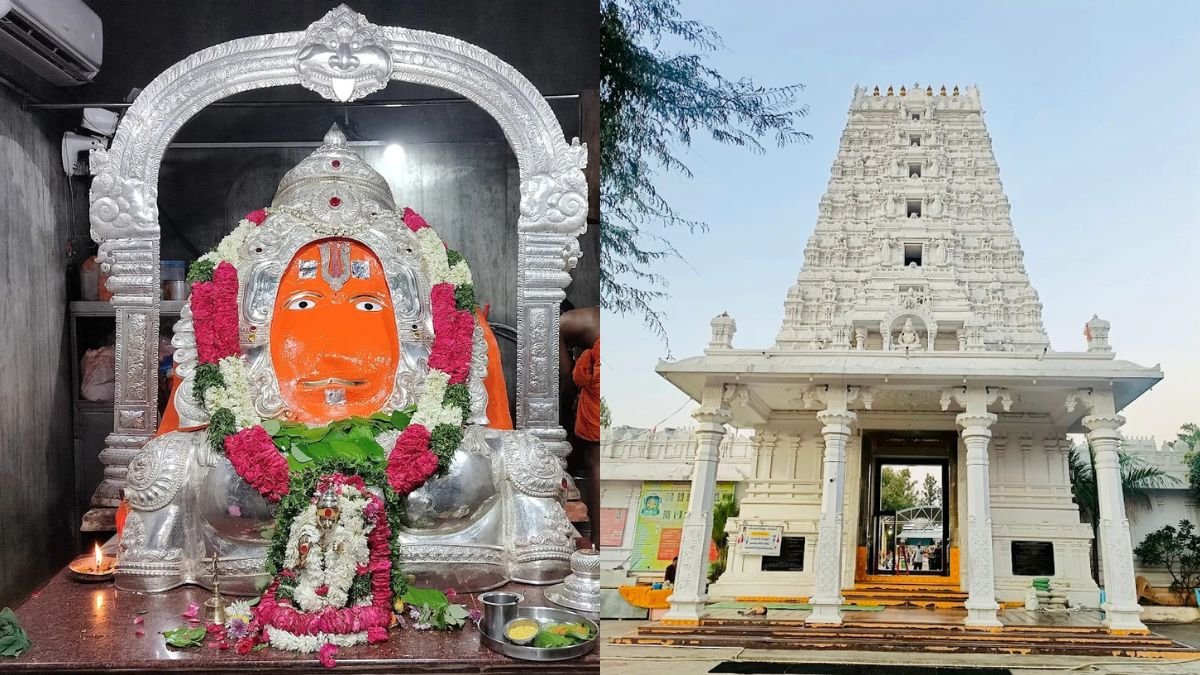Some places you visit. Others, you feel. They have a presence that hums in the air, a story that whispers from the ancient stones. In the sprawling, modern metropolis of Hyderabad, a city of dazzling IT parks and historic Nizami grandeur, lies one such place—a spiritual anchor that has held its ground for nearly 900 years: the Karmanghat Hanuman Temple.
I’ve been fortunate to wander through countless temples across India. I’ve seen architectural marvels that touch the clouds and tiny shrines that hold entire universes within them. But Karmanghat is different. It’s not just a destination; it’s a living, breathing testament to unshakable faith, a place where legends feel as real as the ground beneath your feet.
This isn’t just a guide to tell you the timings and location. This is my personal journey into the heart of one of Hyderabad’s most powerful spiritual epicenters. It’s an invitation to look beyond the rituals and connect with the profound energy that has drawn millions, from Kakatiya kings to common devotees, for centuries.
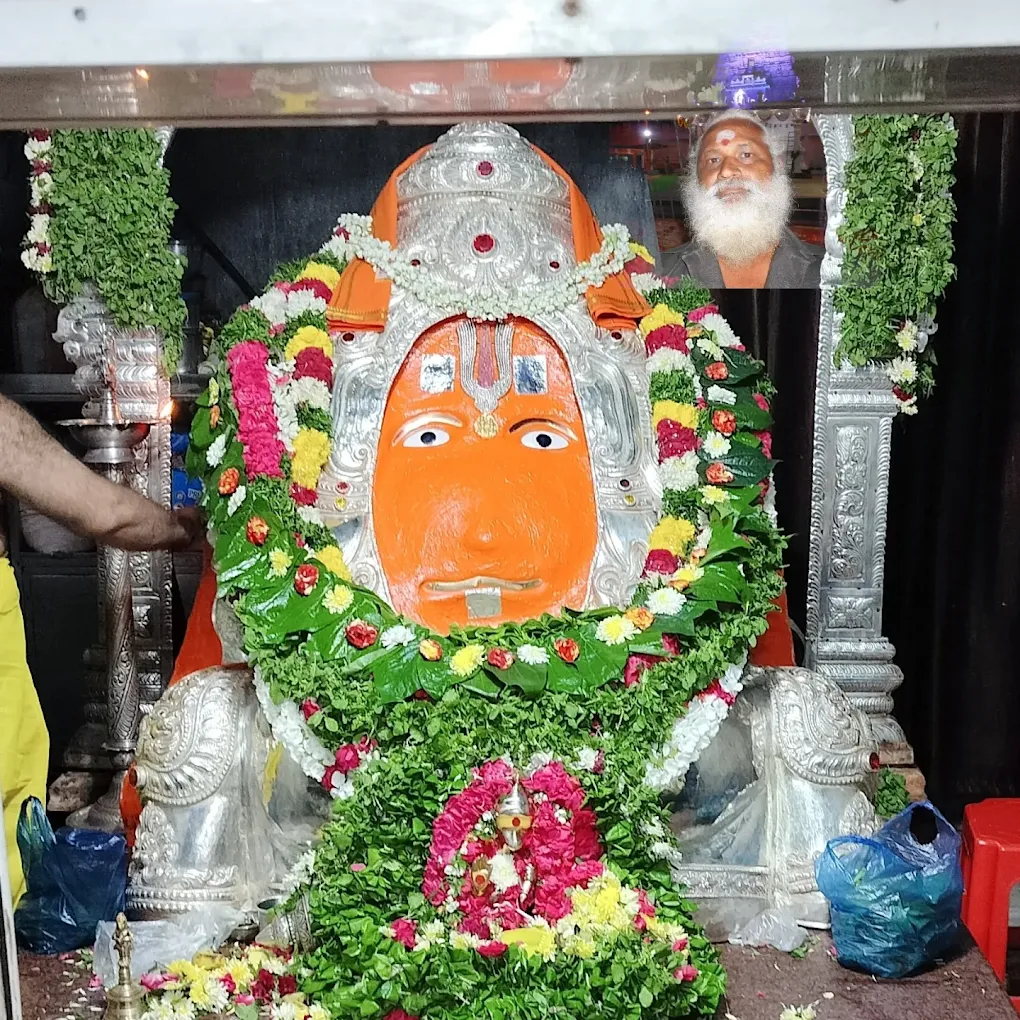
About the Author:Hi, I’m V. For the better part of a decade, my backpack and my camera have been my constant companions. My passion lies in exploring the spiritual heritage of India, seeking out places where history, faith, and local life intertwine. After hearing countless stories from Hyderabadi friends about the “miraculous” Karmanghat temple, I knew I had to experience its aura for myself. This guide is a culmination of my visits, conversations with priests, and hours spent just absorbing the temple’s unique vibrations.
The Legend that Breathes: Why Karmanghat’s Story Will Give You Goosebumps
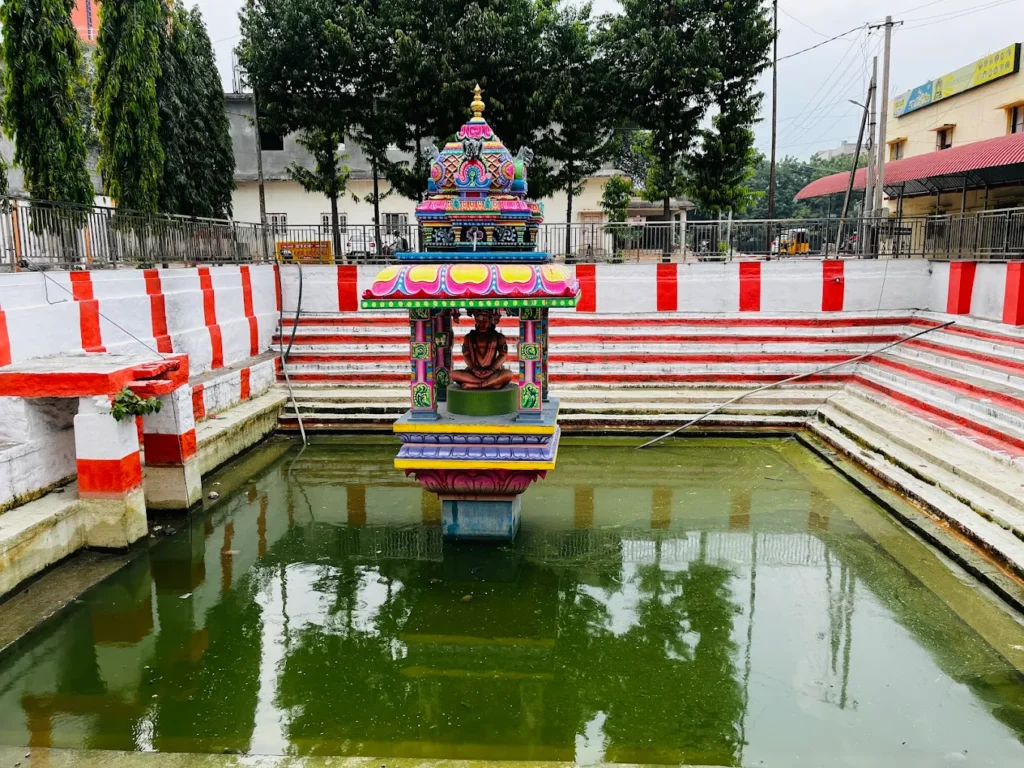
Before you even step foot in the temple, you need to know its story. Because at Karmanghat, the past isn’t just history; it’s the very foundation of its power.
The King and the Divine Chant (Circa 1143 A.D.)
Imagine this: a dense, untamed forest where Hyderabad now stands. A powerful Kakatiya king, Prataparudra II, is on a hunting expedition. He’s weary, perhaps frustrated, and decides to rest under a large tree. The forest is quiet, but then he hears it—a faint, rhythmic, and deeply resonant chanting of “Rama… Rama… Rama…”
Curious and compelled, he follows the sound, pushing aside vines and stepping over ancient roots. He’s led to a clearing where he finds a stone idol of Lord Hanuman, not in his usual powerful stance, but seated calmly in a meditative posture (Dhyana mudra). The king realizes with awe that the divine chant is emanating directly from the idol.
That night, the legend says, Lord Hanuman appeared in the king’s dream, commanding him to build a temple around the self-manifested idol. The king obeyed, and the first structure of this holy sanctuary was born.
The Emperor and the Unbreakable Barrier
Fast forward about 400 years. The political landscape has changed. The Mughal emperor Aurangzeb is on his infamous campaign to demolish Hindu temples. His forces arrive at the gates of the Karmanghat temple, ready to carry out his orders. But they can’t. An invisible, impenetrable force field seems to surround the temple, preventing them from even stepping inside the compound. They try again and again, but are thrown back by this unseen power.
When news of this inexplicable failure reaches Aurangzeb, he is enraged. He marches to the temple himself, a crowbar in his hand, mocking his soldiers’ incompetence. As he strides towards the sanctum sanctorum, a deafening roar fills the air, and a powerful voice thunders from the heavens:
“Mandir todna hai Rajan, to kar man ghat.”
The words, which translate to, “If you wish to break the temple, O King, first make your heart strong (or hard as stone),” struck him like a bolt of lightning. The crowbar clattered to the ground from his trembling hands. Overwhelmed by a divine fear he had never known, Aurangzeb turned and fled. From that day, the place earned its name: Kar-Man-Ghat.
This story isn’t just a myth told by grandmothers; it’s the core of the temple’s identity. It represents a faith so powerful it can halt armies and a divinity that refuses to be conquered.
Brihadeeswarar Temple in Thanjavur—Everything You Need to Know
My First-Hand Walkthrough: Experiencing the Karmanghat Hanuman Temple Aura
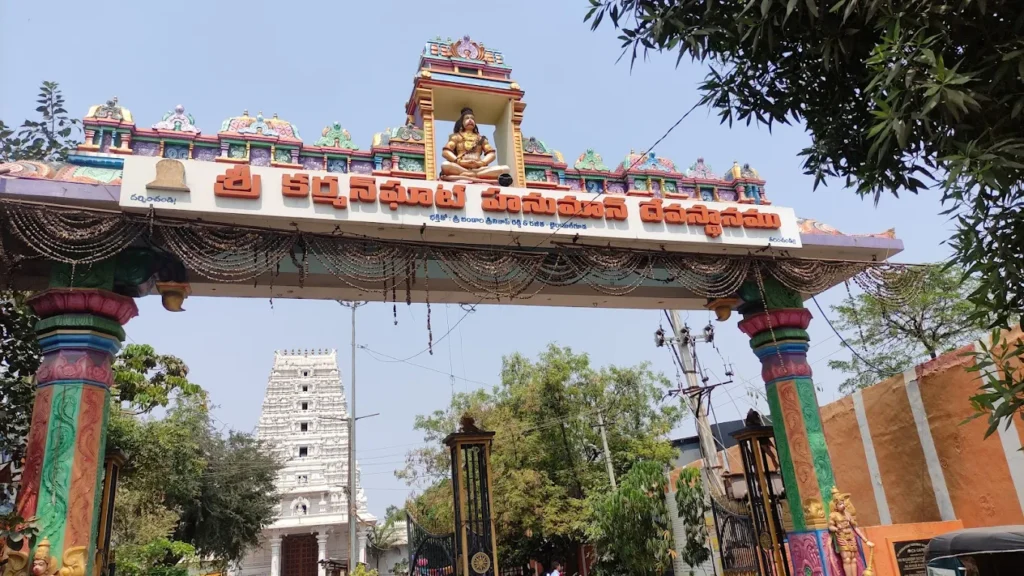
Knowing these stories completely changes your experience. As I approached the temple, I wasn’t just seeing a building; I was entering a fortress of faith.
The Entrance and the First Impression
Located near the bustling Sagar Ring Road, the temple complex feels like an oasis. The moment you step through the entrance arch, the city’s chaotic symphony begins to fade, replaced by the gentle chiming of bells and the murmur of prayers.
The first thing you’ll notice is the towering Rajagopuram (the main temple tower), adorned with intricate carvings of various deities. It’s a classic example of Dravidian architecture and serves as a grand welcome.
Inside the Compound: A World of Shrines
The temple complex spans a surprisingly large area. It’s not just about the main Hanuman shrine. It’s a complete spiritual ecosystem. As you walk along the clean, well-maintained stone pathways, you’ll find smaller, yet significant shrines dedicated to:
- Lord Rama, Sita, and Lakshmana: As Hanuman is Lord Rama’s greatest devotee, his shrine is a place of palpable reverence.
- Lord Shiva: A serene shrine where you can feel a deep, grounding energy.
- Goddess Durga, Saraswati, and Santoshimata: Honoring the different forms of the divine feminine.
- Lord Venugopala Swamy (Krishna) and Lord Jagannath: Celebrating different avatars of Lord Vishnu.
Having all these deities within one complex makes it a pilgrimage site for devotees from all Hindu traditions. I spent time at each shrine, and it felt like a complete spiritual circuit, a journey through the Hindu pantheon.
The Main Sanctum: Meeting Dhyana Anjaneya Swamy
The queue to the main sanctum is where the energy truly concentrates. You can hear the priests chanting Vedic hymns and the collective prayers of the devotees create a powerful, resonant field.
And then, you see him.
The main idol of Dhyana Anjaneya Swamy is unlike any other Hanuman idol I’ve seen. Carved from a single stone, he is seated in a calm, meditative pose, his eyes seemingly closed in deep contemplation of his lord, Rama. There are no weapons, no display of raw power, but an overwhelming sense of immense, controlled strength and profound peace. This is Hanuman, the scholar, the yogi, the perfect devotee.
Standing before the idol, you feel a sense of calm wash over you. The worries of the world seem to fade away. It’s believed that praying to this form of Hanuman grants devotees mental peace, courage to face life’s battles, and the strength to overcome any obstacle.
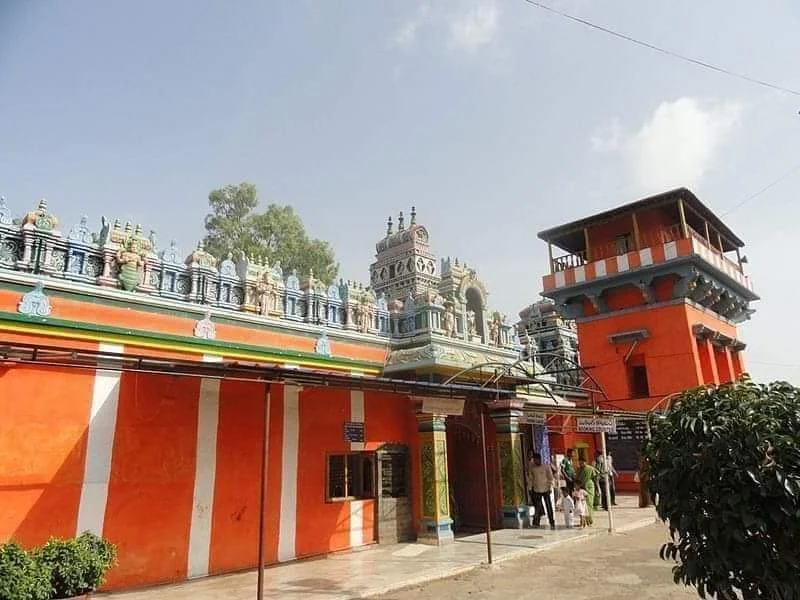
A Practical Guide for a Soulful Visit
A trip to Karmanghat Hanuman Temple is easy, but a little planning can make it a much more fulfilling experience.
Temple Timings: Plan Your Visit
The timings vary slightly on auspicious days.
- General Days (Mon, Wed, Thu, Fri):
- Morning: 6:00 AM – 12:30 PM
- Evening: 4:00 PM – 8:30 PM
- Special Days (Tuesday & Saturday):
- Morning: 5:30 AM – 1:00 PM
- Evening: 4:30 PM – 9:00 PM
My Advice: Tuesdays and Saturdays are incredibly crowded, filled with a fervent, festival-like energy. If you want a vibrant, powerful experience, go on these days. If you prefer a quieter, more contemplative visit to connect with the deity, choose a weekday morning.
Dress Code and Temple Etiquette
Like all major South Indian temples, a modest dress code is expected.
- Men: Trousers, dhotis, kurtas. Avoid shorts.
- Women: Sarees, salwar kameez, kurtis with leggings. Avoid short dresses, skirts, and revealing outfits.
- General Rule: Cover your shoulders and knees. It’s a sign of respect.
Pujas and Offerings: How to Participate
You can simply have a darshan (viewing) of the deity, or you can participate in various rituals.
- Archana: A basic puja where the priest chants your name and gotra (lineage).
- Abhishekam: A ritual bathing of the idol, typically performed in the mornings.
- Akupooja (Betel Leaf Offering): A very popular offering here. Devotees offer garlands made of 108 betel leaves. It’s believed to fulfill wishes quickly.
- Coconut and Flowers: You can buy these from the numerous small shops outside the temple.
The Sacred Temple Pond (Pushkarini)
Don’t miss the temple pond located within the complex. While full-fledged bathing might not always be possible, sprinkling a few drops of the holy water on your head is considered auspicious. It’s a quiet corner, perfect for a few moments of silent reflection.

Festivals: When Karmanghat Comes Alive
If you truly want to see the temple in its full glory, try to visit during a major festival.
- Hanuman Jayanti: This is the grandest celebration. The temple is decorated spectacularly, and special pujas are performed throughout the day, drawing hundreds of thousands of devotees. The energy is electric.
- Sri Rama Navami: A huge festival celebrating Lord Rama’s birth. The connection between Rama and Hanuman makes this a key event.
- Other Festivals: Dussehra, Shivaratri, and Janmashtami are also celebrated with great enthusiasm.
How to Reach Karmanghat Hanuman Temple
The temple is very well-known and accessible.
- By Road: It’s located in Karmanghat, near Santoshnagar, on the Inner Ring Road. You can easily hire an auto-rickshaw or a cab from any part of Hyderabad.
- By Bus: Numerous TSRTC buses connect to the Karmanghat area. The closest major bus stop is IS Sadan.
- By Metro: The nearest metro station is the LB Nagar Metro Station on the Red Line, from where you would need to take an auto or a bus (approx. 4-5 km).
Frequently Asked Questions (From a Traveler’s Perspective)
Is photography allowed inside the temple?
Photography is strictly prohibited inside the main sanctum sanctorum. You can, however, take pictures in the outer courtyard and of the temple gopuram.
Is there parking available?
Yes, there is a dedicated parking area for both two-wheelers and four-wheelers, but it can get very crowded on Tuesdays and Saturdays.
How much time should I budget for my visit?
On a regular weekday, 1 to 1.5 hours is sufficient for a thorough visit. On a Tuesday or Saturday, be prepared for longer queues, and it might take 2-3 hours.
Is there a place to leave my footwear?
Yes, there is a secure, token-based footwear stand near the entrance.
Final Thoughts: The Unseen Force of Karmanghat
Leaving the Karmanghat temple, you step back into the noise and speed of Hyderabad, but something feels different. You carry a piece of its stillness with you. This temple is a powerful reminder that in a world of constant change, some things endure. It’s a story of faith so strong it could stop an emperor, and a divine peace so profound it can calm the most troubled heart.
Whether you are a devout follower, a lover of history, or simply a curious traveler, a visit to Karmanghat is an experience that will stay with you. It’s a place that doesn’t just demand your respect; it quietly, powerfully, earns it. It is, in every sense of the word, the strong heart of Hyderabad.

